Durendal – Magical Sword Of Knight Roland That Cut Stone Boulders With A Single Strike
A. Sutherland - AncientPages.com - One of the most famous swords in the history of humanity is the legendary Durendal, which belonged to Roland, Charlemagne's knightly champion and the hero of many French ballads, legends, and songs.
Alleged fragment of Durendal in Rocamadour. Image credit: Patrick Clenet - CC BY-SA 3.0
Charlemagne's mysterious sword "Joyeuse" contained the relics of saints. Also, the formidable Durendal had treasures like the hair of Dionysus of Paris (also Denis of Paris, a 3rd-century Christian martyr and saint), a tooth of St. Peter, part of the Blessed Virgin Marys garment, and the blood of St. Basil, hidden in the hilt of this magical sword.
These important and no doubt religious relics convinced the user/possessor of the weapon's extraordinary values in the fight, especially invincibility.
The name' Durendal' originates from the French word: "durer" ('endure'), but the whole combination may even be (durant – dail), in English, "strong scythe" with superb qualities including the power of withstanding hardship or stress, and resistance. Interestingly, 'Durendal' is a female name, and it is in femininity that the Knight refers to his weapon in ballads.
The Durendal sword was made of the finest metal alloys, and its qualities helped Roland deal with the attacking army of Muslims. It also contributed to other unusual achievements; for example, it could easily cut stone boulders with a single strike only.
According to one 12th-century legend from the French town of Rocamadour, Roland threw the sword into a cliffside, and its replica can be found there, embedded into the cliff-face next to the town's sanctuary.
Knight Roland received the magnificent Durendal weapon from King Charlemagne, king of the Franks and Emperor of the Holy Roman Empire when the young Knight took the oath. The sword is said to have belonged to young Charlemagne at one point and finally came into possession of Roland.
Credit: Lansing, Marion Florence, 1883 - Public Domain
The famous "Song of Roland' lets us believe that the legendary Durendal was first given to Charlemagne by an angel, but there are several theories on the origin of this sword.
Did the weapon once belong to Hector and was later given to Roland? Hector was a Trojan prince and the greatest warrior for Troy in the Trojan War in the mythologies of Greeks and Romans. He led his people and their allies in defense of Troy, killing countless Greek warriors. He was ultimately killed in single combat by Achilles. No doubt, Hector had his mighty weapons, but Durendal could not belong to this hero because all the swords dated to Hector's time were made of bronze.
It is commonly agreed that Durendal was created by Wayland the Smith, recognized as a highly-skilled craftsman, often mentioned in heroic romances, widespread in the noble courts of High Medieval and Early Modern Europe.
An invincible Durendal was forged from the same iron bar as King Charlemagne's 'Joyeuse' blade. This famous smith forged incredible weapons such as the Miming sword for his son Heime. He also created the precious sword Balmung for Sigmund, known from Anglo-Saxon poems, and yet another for the Volsung hero.
But it was not Durendal's fate to be destroyed. An 11th-century epic poem, The Song of Roland (' La Chanson de Roland,') describes Roland's attempt to damage his Durendal by hitting it against marble blocks to prevent it from being captured by the attacking Saracens. Once again, the sword proved indestructible, and after being mortally wounded, Roland hid it beneath his body as he lay dying along with the oliphant, an ivory hunting horn used to alert Charlemagne's forces.
Yet another legend dated to the 12th century tells us that Roland threw his sword into the rock to protect it from being taken by enemies, and the blade was firmly stuck in the stone. Nevertheless, residents of Rocamadour town in southwestern France still believe that a rusty sword sticking into the rock in one of the local monasteries is Durendal.
A more official version usually given to the visiting tourists is that the sword embedded in a cliff wall is a replica of Durendal.
Written by – A. Sutherland - AncientPages.com Senior Staff Writer
Updated on July 3, 2022
Copyright © AncientPages.com All rights reserved. This material may not be published, broadcast, rewritten or redistributed in whole or part without the express written permission of AncientPages.com
Expand for referencesReferences:
Cotterell A., Słownik mitów świata
Sayers Dorothy L. The Song of Roland
Cook, R. F. The Sense of the Song of Roland
More From Ancient Pages
-
 Mystery Of Charterhouse Warren’s Early Bronze Age Site Solved By Scientists
Archaeology | Dec 27, 2024
Mystery Of Charterhouse Warren’s Early Bronze Age Site Solved By Scientists
Archaeology | Dec 27, 2024 -
 Circular Stepped Pyramids Of Guachimontones And Teuchitlan Tradition – A Lost Ancient World In Mexico
Civilizations | Mar 13, 2016
Circular Stepped Pyramids Of Guachimontones And Teuchitlan Tradition – A Lost Ancient World In Mexico
Civilizations | Mar 13, 2016 -
 Being Left-Handed Was A Sign Of Evil Until Only Recently
Ancient History Facts | Jun 29, 2018
Being Left-Handed Was A Sign Of Evil Until Only Recently
Ancient History Facts | Jun 29, 2018 -
 Mysterious Ancient Ruins Of Fortress Discovered In Scottish Highlands
Archaeology | Jan 16, 2018
Mysterious Ancient Ruins Of Fortress Discovered In Scottish Highlands
Archaeology | Jan 16, 2018 -
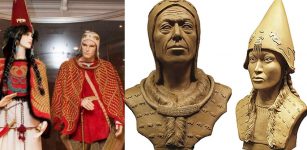 Stunning Facial Reconstruction Of ‘Siberian Tutankhamun’ And His ‘Queen’ Who Died 2,600 Years Ago
Archaeology | Jan 12, 2021
Stunning Facial Reconstruction Of ‘Siberian Tutankhamun’ And His ‘Queen’ Who Died 2,600 Years Ago
Archaeology | Jan 12, 2021 -
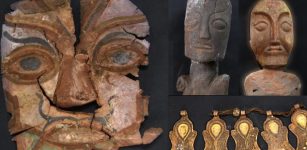 Golden And Silver Facial Ornaments, Wooden Figurines Among The Finds In Tomb Of Tibetan Plateau
Archaeology | Dec 28, 2020
Golden And Silver Facial Ornaments, Wooden Figurines Among The Finds In Tomb Of Tibetan Plateau
Archaeology | Dec 28, 2020 -
 Thousands Want To Drink Red Liquid From The Granite Sarcophagus In Egypt
Archaeology | Jul 23, 2018
Thousands Want To Drink Red Liquid From The Granite Sarcophagus In Egypt
Archaeology | Jul 23, 2018 -
 Njord: Norse God Of The Seas And Seafarers And His Unhappy Marriage To Skadi
Featured Stories | Jul 10, 2018
Njord: Norse God Of The Seas And Seafarers And His Unhappy Marriage To Skadi
Featured Stories | Jul 10, 2018 -
 Mystery Of Vitrified Scottish Fort Dun Deardail And Ancient Myth Deirdre Of The Sorrows: Is There A Prehistoric Connection?
Civilizations | Feb 5, 2021
Mystery Of Vitrified Scottish Fort Dun Deardail And Ancient Myth Deirdre Of The Sorrows: Is There A Prehistoric Connection?
Civilizations | Feb 5, 2021 -
 Kingdom Of The Vandals: A People In Search Of A Home
Civilizations | Dec 14, 2018
Kingdom Of The Vandals: A People In Search Of A Home
Civilizations | Dec 14, 2018 -
 Ancient Alaskans Were Freshwater Fishers – Earliest Evidence Found
Archaeology | Jun 19, 2023
Ancient Alaskans Were Freshwater Fishers – Earliest Evidence Found
Archaeology | Jun 19, 2023 -
 Mysterious Kaali Crater And The Holy Lake – Sacred Ancient Places In Estonia
Featured Stories | Jan 19, 2018
Mysterious Kaali Crater And The Holy Lake – Sacred Ancient Places In Estonia
Featured Stories | Jan 19, 2018 -
 Uncovering 16th Century Scottish Royal Dockyards Used By King James IV’s Navy
Archaeology | May 24, 2018
Uncovering 16th Century Scottish Royal Dockyards Used By King James IV’s Navy
Archaeology | May 24, 2018 -
 More Than 60,000 Ancient Maya Structures Obscured By Inaccessible Forest Revealed By LIDAR
Archaeology | Sep 29, 2018
More Than 60,000 Ancient Maya Structures Obscured By Inaccessible Forest Revealed By LIDAR
Archaeology | Sep 29, 2018 -
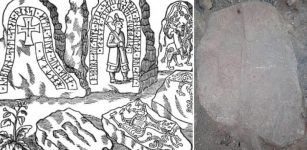 Unique Lost Runestone Of The Hunnestad Monument Finally Found After 300 Years In Sweden
Archaeology | Dec 16, 2020
Unique Lost Runestone Of The Hunnestad Monument Finally Found After 300 Years In Sweden
Archaeology | Dec 16, 2020 -
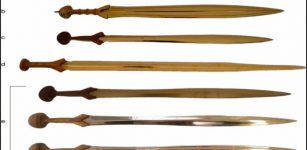 Bronze Age Swords Were Used By Skilled Fighters – New Study
Archaeology | Apr 29, 2020
Bronze Age Swords Were Used By Skilled Fighters – New Study
Archaeology | Apr 29, 2020 -
 Mythical Shield-Maidens Did Exist – Evidence Of Female Viking Warriors Discovered
Archaeology | Sep 9, 2017
Mythical Shield-Maidens Did Exist – Evidence Of Female Viking Warriors Discovered
Archaeology | Sep 9, 2017 -
 Decebalus – The Brave One’ – Last Mighty King Of Dacian People
Featured Stories | Jun 23, 2022
Decebalus – The Brave One’ – Last Mighty King Of Dacian People
Featured Stories | Jun 23, 2022 -
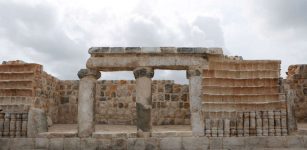 Ancient Mayan City Filled With Palaces, Pyramids And Plazas Discovered On Construction Site In Mexico
Archaeology | May 27, 2022
Ancient Mayan City Filled With Palaces, Pyramids And Plazas Discovered On Construction Site In Mexico
Archaeology | May 27, 2022 -
 Kanishka Casket – Beautiful Ancient Buddhist Treasure In Gilded Copper
Featured Stories | Jun 14, 2021
Kanishka Casket – Beautiful Ancient Buddhist Treasure In Gilded Copper
Featured Stories | Jun 14, 2021


